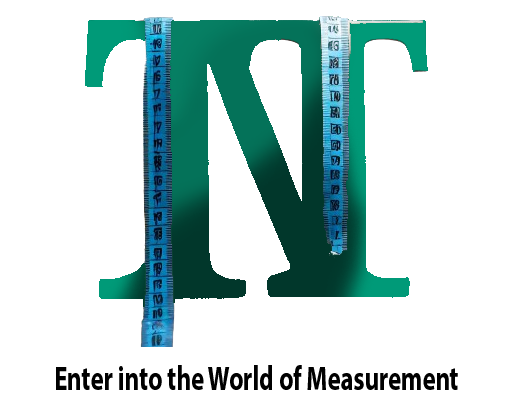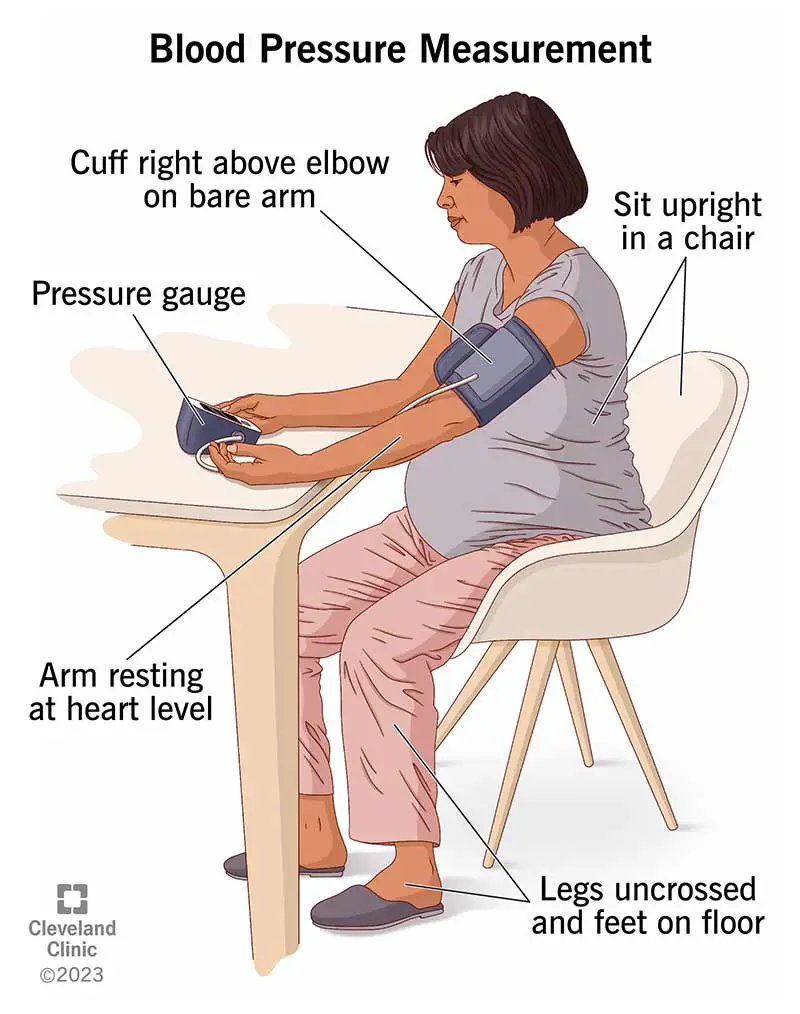How to Measure Blood Pressure Accurately at Home
To measure blood pressure, wrap cuff around upper arm, position stethoscope, inflate cuff, and listen for sounds. Measuring blood pressure is crucial for monitoring cardiovascular health and detecting potential issues early on.
Understanding how to accurately measure blood pressure at home can empower individuals to take control of their health and make informed decisions regarding their well-being. By following proper techniques and using the right equipment, one can ensure accurate readings and track changes over time.
Regular blood pressure monitoring is a simple yet effective way to stay proactive about heart health and overall wellness. It is important to consult a healthcare professional for guidance on interpreting readings and implementing necessary lifestyle changes.

Credit: www.alluvionhealth.org
The Importance Of Accurate Blood Pressure Readings
Accurate blood pressure readings are crucial for monitoring health. To measure blood pressure correctly, ensure proper cuff placement and a quiet environment. Consistent monitoring helps in early detection of potential health issues.
Risks Of Mismanaged Blood Pressure
High blood pressure, also known as hypertension, is a serious condition that can lead to various health complications if not properly managed. Ignoring or mismanaging your blood pressure can put you at risk for:
- Heart disease
- Stroke
- Kidney problems
- Vision loss
- Peripheral artery disease
It’s crucial to regularly measure and monitor your blood pressure to ensure it stays within a healthy range. By doing so, you can prevent or minimize the risks associated with high blood pressure.
Benefits Of Home Monitoring
Monitoring your blood pressure at home has become increasingly popular and is highly beneficial for several reasons:
- Convenience: Home blood pressure monitors allow you to check your readings at any time, without having to visit a healthcare professional.
- Accuracy: When using a reliable and properly calibrated device, home monitoring can provide accurate readings, eliminating the potential for measurement errors that may occur in a clinical setting.
- Early Detection: Regularly monitoring your blood pressure at home enables you to detect any significant changes or spikes early on, allowing for prompt intervention and prevention of potential health issues.
- Personalized Care: With home monitoring, you can track your blood pressure trends over time, providing valuable information to your healthcare provider for a more personalized treatment plan.
Overall, home blood pressure monitoring is a convenient and effective way to ensure accurate readings, detect potential issues early, and actively participate in managing your blood pressure for better overall health.
:max_bytes(150000):strip_icc()/Health-Steps-Blood-Pressure-purple-horiz-1-fb490c4b4856423781f8951cc0ee373b.jpg)
Credit: www.health.com
Understanding Blood Pressure Numbers
Blood pressure is a critical indicator of overall health and is measured using two numbers. Understanding these numbers is essential for managing and monitoring blood pressure effectively.
Systolic Vs. Diastolic
The systolic blood pressure measures the force exerted against the artery walls when the heart contracts, while the diastolic blood pressure measures the pressure in the arteries when the heart is at rest between beats.
What Is Considered Normal Blood Pressure?
Normal blood pressure is typically defined as a systolic pressure of less than 120 mm Hg and a diastolic pressure of less than 80 mm Hg. These numbers indicate a healthy balance in the cardiovascular system, reducing the risk of heart disease and other health issues.
Selecting The Right Blood Pressure Monitor
When it comes to monitoring your blood pressure at home, selecting the right blood pressure monitor is crucial. With a wide range of options available on the market, it can be overwhelming to choose the one that suits your needs. To help you make an informed decision, consider the following factors when selecting a blood pressure monitor:
Types Of Home Blood Pressure Monitors
There are primarily two types of home blood pressure monitors: upper arm monitors and wrist monitors. Each type has its own pros and cons.
| Type | Pros | Cons |
|---|---|---|
| Upper Arm Monitors | Accurate and reliable | Can be bulky and uncomfortable |
| Wrist Monitors | Compact and portable | May not be as accurate as upper arm monitors |
Features To Consider When Buying
When purchasing a blood pressure monitor, keep the following features in mind:
- Accuracy: Look for monitors that are clinically validated for accurate readings.
- Cuff Size: Ensure the cuff fits your arm or wrist properly for accurate measurements.
- Memory Function: A monitor with memory storage allows you to track your readings over time.
- Display: Opt for a monitor with a clear and easy-to-read display.
- Power Source: Consider whether you prefer a monitor with batteries or one that can be plugged into an outlet.
By considering these factors, you can select a blood pressure monitor that meets your needs and helps you accurately monitor your blood pressure at home. Remember, regular monitoring can play a crucial role in managing your blood pressure and maintaining your overall health.
Preparing For A Blood Pressure Measurement
Prepare for a blood pressure measurement by sitting upright with feet flat, resting for 5 minutes before. Avoid caffeine and exercise. Relax your arm at heart level for an accurate reading.
Best Practices Before Taking A Reading
Before measuring your blood pressure, it is important to follow some best practices to ensure accurate and reliable results. These practices include:
1. Resting Prior to Measurement: Find a quiet and comfortable place to sit and relax for at least five minutes before taking a blood pressure reading. This allows your body to calm down and stabilize.
2. Empty Your Bladder: Ensure that you have emptied your bladder before measuring your blood pressure. A full bladder can affect the accuracy of the reading.
3. Avoid Stimulants: It is recommended to avoid consuming caffeinated beverages, smoking, or exercising for at least 30 minutes prior to measuring your blood pressure. These activities can temporarily raise your blood pressure.
4. Refrain from Talking: Engaging in conversation during the measurement process can lead to inaccurate readings. It is best to remain silent and focus on staying calm and relaxed.
5. Proper Arm Position: Position your arm correctly for an accurate measurement. Rest your arm on a table or armrest so that it is at the same level as your heart. Make sure your arm is supported and relaxed.
Common Factors That Affect Blood Pressure
Several factors can influence your blood pressure readings. It is essential to be aware of these factors to obtain accurate measurements. Some common factors that can affect blood pressure include:
1. Physical Activity: Engaging in physical activity or exercise can temporarily increase your blood pressure. It is recommended to wait at least 30 minutes after exercising before measuring your blood pressure.
2. Stress and Anxiety: Emotional stress and anxiety can cause a temporary rise in blood pressure. It is important to remain calm and relaxed before taking a blood pressure reading.
3. Time of Day: Blood pressure levels can fluctuate throughout the day. Typically, blood pressure is lower in the morning and increases during the day. It is advisable to measure your blood pressure at the same time each day for consistency.
4. Medications and Supplements: Certain medications and supplements can affect blood pressure readings. It is important to inform your healthcare provider about any medications or supplements you are taking to ensure accurate interpretation of your readings.
5. Temperature and Environment: Extreme temperatures, such as hot weather or a cold room, can influence blood pressure readings. It is recommended to take measurements in a comfortable and stable environment.
Remember, following best practices and considering common factors that affect blood pressure can help you obtain accurate readings. Monitoring your blood pressure regularly and consulting with a healthcare professional will provide valuable insights into your overall health.
Step-by-step Guide To Measuring Blood Pressure
Blood pressure measurement is a crucial aspect of monitoring and maintaining overall health. Understanding the step-by-step process of measuring blood pressure accurately is essential for both individuals and healthcare professionals. This guide will walk you through the proper cuff placement and posture, as well as reading and interpreting the results.
Proper Cuff Placement And Posture
When measuring blood pressure, proper cuff placement and posture are critical for accurate readings. Follow these steps for precise measurements:
- Place the cuff directly above the bend of the elbow.
- Ensure the cuff is snug but not too tight.
- Sit in a chair with your back supported and feet flat on the floor.
- Rest your arm on a flat surface, such as a table, with your palm facing up.
Reading And Interpreting The Results
After following the proper cuff placement and posture, the next step involves reading and interpreting the blood pressure results. Here’s how to interpret the numbers:
| Category | Systolic Pressure (mmHg) | Diastolic Pressure (mmHg) |
|---|---|---|
| Normal | Less than 120 | Less than 80 |
| Elevated | 120-129 | Less than 80 |
| Hypertension Stage 1 | 130-139 | 80-89 |
| Hypertension Stage 2 | 140 or higher | 90 or higher |
| Hypertensive Crisis | Higher than 180 | Higher than 120 |
Frequency Of Blood Pressure Monitoring
When it comes to managing your blood pressure, it’s important to monitor it regularly. The frequency of blood pressure monitoring plays a crucial role in understanding your overall cardiovascular health. By keeping track of your blood pressure readings, you can identify any potential issues early and take necessary steps to maintain a healthy blood pressure level.
How Often Should You Check?
It is recommended to check your blood pressure at least once a year if it is within the normal range (less than 120/80 mmHg). However, if you have high blood pressure or other risk factors, such as diabetes or heart disease, it is advisable to monitor it more frequently, as recommended by your healthcare provider.
Tracking Your Readings Over Time
Tracking your blood pressure readings over time can provide valuable insights into your overall cardiovascular health. By maintaining a record of your readings, you and your healthcare provider can identify any patterns or trends, which can help in making informed decisions about your treatment plan.
Troubleshooting Common Issues
When measuring blood pressure, encountering common issues may affect the accuracy of readings. Below are methods to address these problems:
Dealing With Inconsistent Readings
- Ensure proper placement of the cuff on the upper arm.
- Sit in a relaxed position with feet flat on the floor.
- Wait 5 minutes before taking a second reading.
Maintenance Of Your Blood Pressure Monitor
- Regularly calibrate and check the accuracy of the device.
- Clean the cuff and monitor according to the manufacturer’s instructions.
- Replace batteries or charge the device as needed.

Credit: www.bloodpressureuk.org
When To Consult A Healthcare Professional
It is important to consult a healthcare professional if you are unsure about how to measure your blood pressure accurately. They can provide guidance on the correct technique and help monitor your readings for any signs of concern. Regular check-ups can also ensure that any potential issues are identified and addressed promptly.
If your blood pressure readings consistently show high or low values, seek medical advice. Visit a healthcare provider if you experience symptoms like dizziness or chest pain.
Interpreting Abnormal Readings
– High readings: Above 140/90 mmHg may indicate hypertension.
– Low readings: Below 90/60 mmHg may signal hypotension.
Managing Blood Pressure With Medical Guidance
– Follow your doctor’s advice for lifestyle changes.
– Take medications as prescribed for optimal control.
Frequently Asked Questions
How Is Blood Pressure Measured?
Blood pressure is measured using a device called a sphygmomanometer. The device consists of a cuff that is wrapped around the upper arm and a gauge that measures the pressure within the cuff. The cuff is inflated to temporarily stop the flow of blood in the arm, and then slowly deflated while the gauge measures the pressure.
What Is A Normal Blood Pressure Reading?
A normal blood pressure reading is typically around 120/80 mm Hg. The first number, 120, represents the systolic pressure, which is the pressure in the arteries when the heart beats. The second number, 80, represents the diastolic pressure, which is the pressure in the arteries when the heart is at rest.
What Factors Can Affect Blood Pressure?
Several factors can affect blood pressure, including age, weight, exercise habits, stress levels, and underlying medical conditions such as diabetes or kidney disease. Genetics may also play a role in determining a person’s blood pressure.
How Often Should Blood Pressure Be Checked?
Blood pressure should be checked at least once a year for most adults, and more frequently for those who have high blood pressure or other risk factors for heart disease. It is important to have blood pressure checked regularly in order to detect any potential problems early on.
Conclusion
To sum up, measuring blood pressure is an important aspect of maintaining good health. With the right tools and techniques, anyone can measure their blood pressure accurately at home. It is crucial to monitor blood pressure regularly to detect any abnormalities early on and seek medical attention if necessary.
By following the steps outlined in this post, you can take control of your health and ensure that your blood pressure remains within healthy limits.







